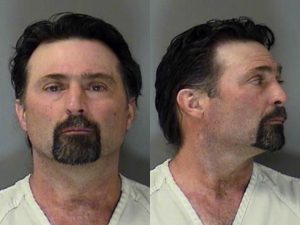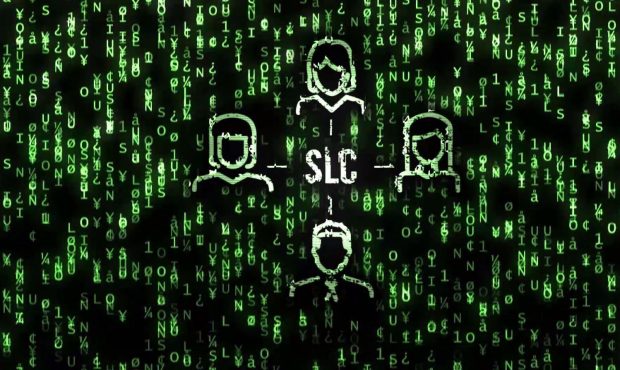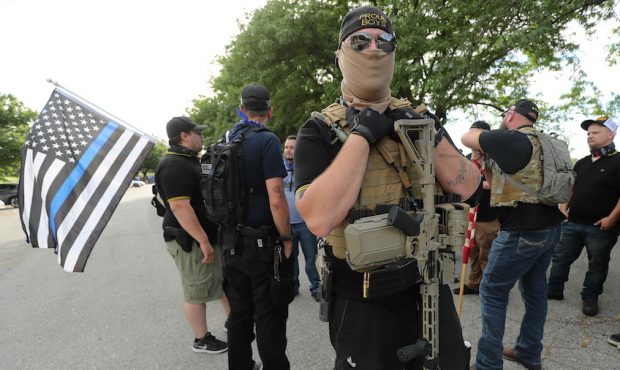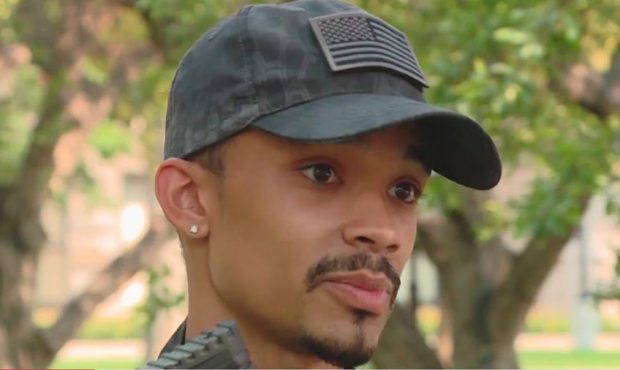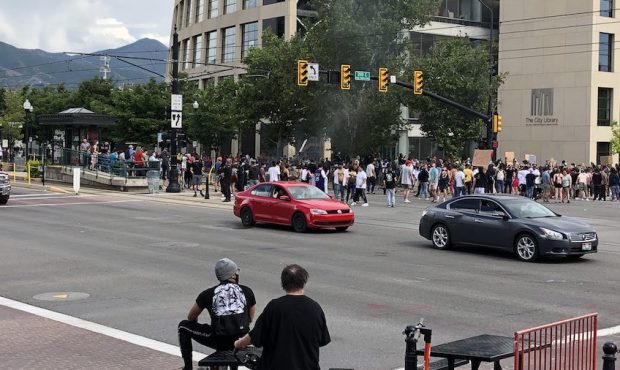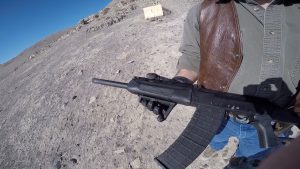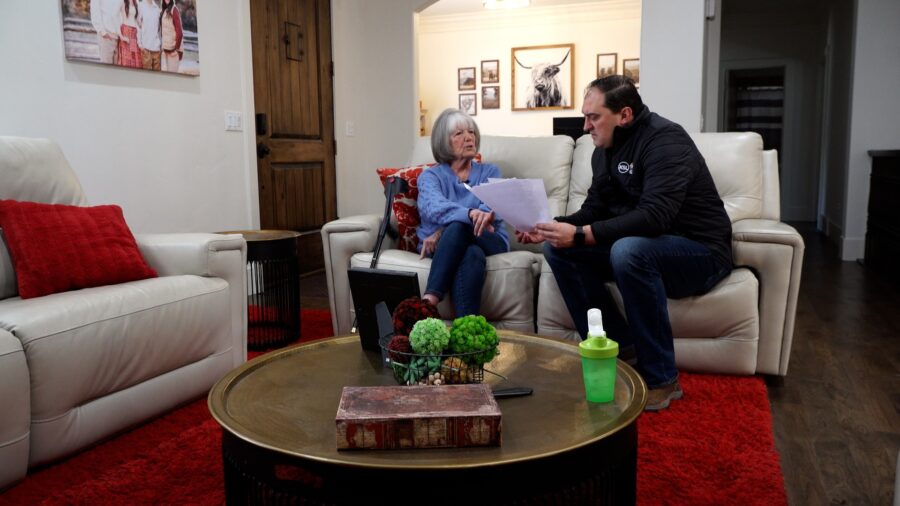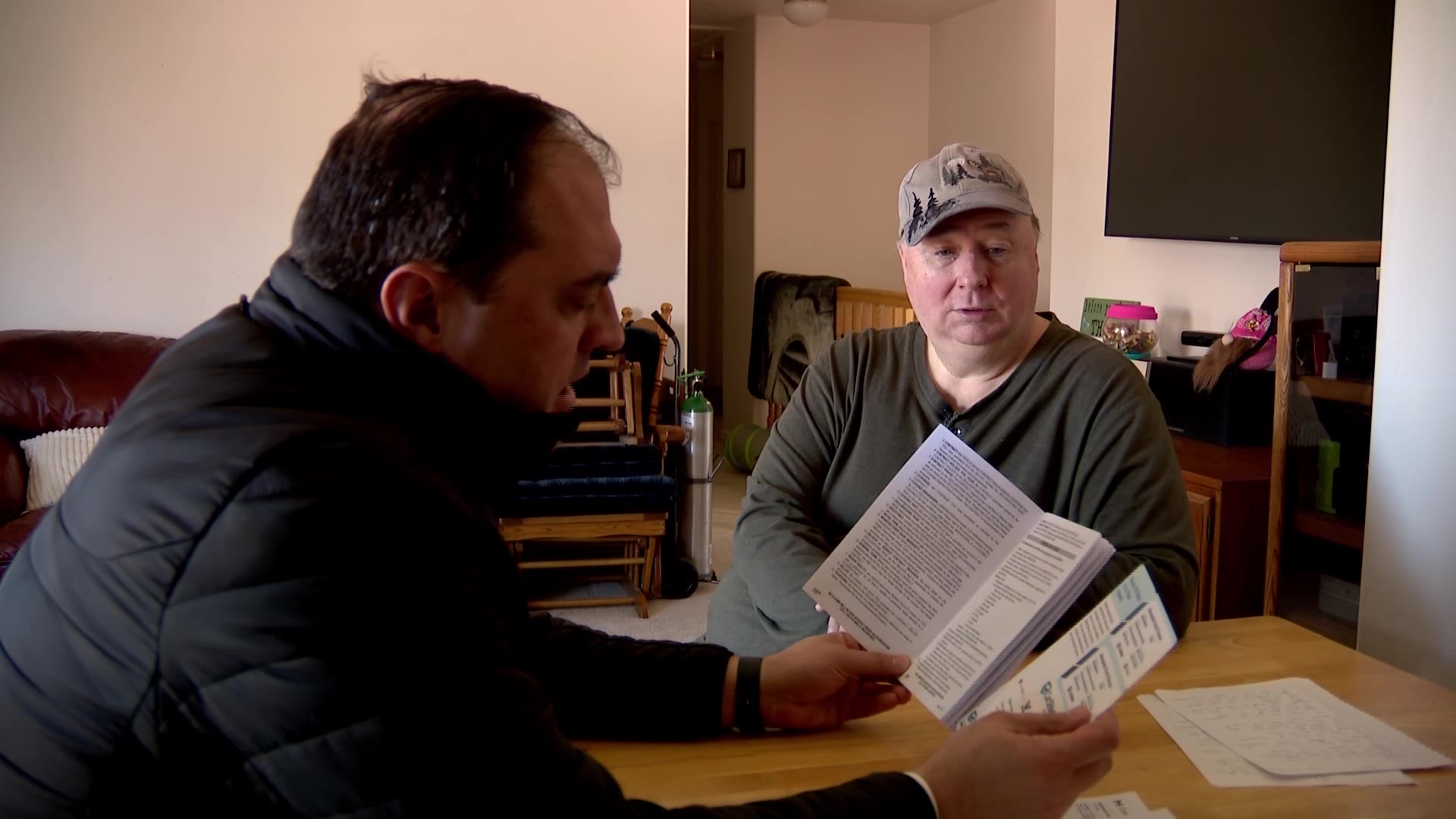Domestic Extremists: KSL Investigators take you inside an FBI investigation
Feb 12, 2021, 10:08 PM | Updated: Feb 7, 2023, 3:00 pm
SALT LAKE CITY — A recent bulletin from the Department of Homeland Security warns of a rising threat from violent extremists across the country.
Federal law enforcement works hard to locate and stop extremists before they act.
Retired FBI Special Agent Greg Rogers spent his career doing just that, and he says it’s the “lone wolf” domestic extremists who kept him up at night.
RELATED STORY: Utah’s Extremists: KSL Investigates Efforts To Find & Stop Them Before They Strike
“I started working militia cases in ’96 or ’97,” Rogers explained. That continued to be his focus until he retired in 2017.
Rogers closed out his undercover militia career with the case of William Krisstofer Wolf, 58, a Montana man who formed his own unnamed militia group.
As the case is representative of many federal investigations happening every day across the country, Rogers sat down with the KSL Investigators to share how that investigation ended in Wolf’s arrest.
How William Wolf Got On The FBI’s Radar
Wolf’s anti-government values were well-known and often on display during public comment periods at city and county commission meetings in Gallatin County.
In 2012, much of Wolf’s focus was on campaigning against the use of fluoride in local water.
During a Bozeman City Commission meeting held on March 19, 2012, Wolf said, “The people have the right – have the exclusive right – of governing themselves as a free and sovereign and independent state.”

William Wolf addresses the Gallatin County Commission on May 20, 2014. Photo: The Bozeman Daily Chronicle
By 2014, thanks to his weekly online radio show, “The Montana Republic,” Wolf had a following and was gaining attention. An informant contacted the regional FBI office, concerned his rhetoric was getting more violent.
“That’s how I got into the vast majority of these groups,” Rogers said. “I’d get introduced into them by one of their own members.”
According to federal prosecutors, over time, Wolf communicated to the undercover agent his desire to obtain or build a “blowtorch gun” or flamethrower which could be used to target law enforcement officials and vehicles, including the Bozeman Police Department’s recently acquired BearCat vehicle.
“When I was introduced to him,” Rogers said, “he thought I’d been a sort of ‘spook contractor’ in Afghanistan and that I’d done a lot of work over there. So, he believed that I could get weapons through contacts of mine that you couldn’t purchase legally.”
Rogers said Wolf became concerned and criticized the local law enforcement’s efforts to “militarize,” when he believed a local agency was likely to receive an armored vehicle from the U.S. military as troops were drawing down in Iraq and Afghanistan.
“When Wolf saw that, he believed that the reason [the local sheriff] was getting that was to use that to come on to different properties,” Rogers explained. “[Wolf] was absolutely convinced that the reason the sheriff acquired the armored vehicle was to defeat his weapons and be able to get to his house to arrest him.”
Rogers says that was not the case.
“Wolf’s home was intentionally set up so that it was a distance from the road, and he had done all sorts of research about the different weapons he had and how he could fend off law enforcement there,” he added.
Carrying Out The Undercover Investigation
Rogers says he spent about nine months with Wolf, gaining his trust. Meanwhile, he says Wolf was becoming radicalized.
“[Wolf] got to where he was actually advocating, in his own words, ‘napalming’ a courthouse,” Rogers said.
Later, Rogers said, “[Wolf] approached me one day and told me that he wanted what’s called a Saiga 12, which is a Russian-manufactured, fully automatic shotgun.”
The weapon is illegal without a Federal Firearms License, or FFL, which Wolf did not have.
Wolf believed Rogers could help him acquire one.
“[Wolf] told me that he wanted it because it would defeat body armor and talked to me about wanting to kill the local sheriff,” Rogers said.
According to the prosecution, Wolf asked Rogers to send him a video of the weapon so he knew the gun was fully automatic and not semi-automatic. So, Rogers sent him the video below.
Video Credit: Greg Rogers
Rogers says because Wolf asked for the specific weapon, he could not claim an entrapment defense, as is commonly used in federal extremist cases involving undercover operations.
“I honestly had never even heard of one (a Saiga 12),” continued Rogers, emphasizing the fact that the idea to find and purchase the illegal firearm was Wolf’s, not his.
“The idea to commit any illegal activity should initiate with the subject of the investigation every time,” Rogers said.
The retired agent says it is critical that the FBI gets in front of cases like this one in order to prove the intent of extremists, especially when they do not have much of a criminal record, and to do so before anyone is at risk of getting hurt or killed.
“We are absolutely charging these guys with offenses to prevent them from doing something, before it happens,” Rogers explained.
He says that even though most militia members have anti-government views, that doesn’t mean they are willing to cross the line and plan attacks on American soil.
“It’s not illegal to be really mad at the government. It’s one thing to have that worldview. It’s a totally different thing to want to act out and be violent,” Rogers emphasized. “You have every right in the world to be as upset with the federal government as you want, but if you come to me and you want a fully automatic weapon to kill a law enforcement officer, you’re gonna get charged with that.”
A Federal Trial
On March 25, 2015, Wolf met Rogers at a truck stop in Livingston, Montana to finalize the sale of the illegal firearm.
According to the Department of Justice, “Wolf stated, ‘The purpose of the gun is not to go hunting with, it’s to clean house.’”
Then, “Minutes before taking possession of the machine gun, Wolf told the agent, ‘I just need to kill the public officials.’”
Wolf paid the agent and, as seen in aerial footage from the sting operation, he put the firearm inside his vehicle. Undercover agents immediately surrounded Wolf and he was arrested.
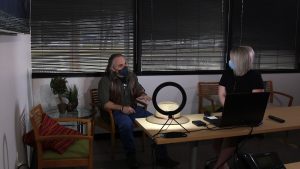
Retired FBI Agent Greg Rogers Shows KSL Investigator Brittany Glas video of the arrest of William Wolf. To protect the integrity of the investigation, Rogers asked KSL not to publish any undercover video that shows the suspect or other law enforcement officers.
Wolf was detained without bond pending his conviction and sentencing. Following a three-day federal trial in November 2015, a Montana jury found Wolf guilty on two counts: Illegal Possession of a Machine Gun and Possession of a Firearm not Registered in the National Firearms Registration and Transfer Record. On March 3, 2016, U.S. District Court Judge Susan Watters sentenced Wolf to 72 months incarceration and three years’ supervised release.
Wolf was released in May 2020, after five years in custody.
“Now that he’s a convicted felon, were he to do anything like that again, it’s a whole separate deal,” Rogers said.
The retired FBI agent says he was involved in dozens of similar cases during his 30 years with the federal agency. Rogers says because it is so difficult to prosecute these crimes without allowing violent attacks to happen, the suspects were most often arrested on charges that carry lesser penalties, like weapons and narcotics crimes.
Another factor law enforcement must consider, Rogers says, is that by putting an extremist behind bars, it could cause them to become more radicalized, especially if they are incarcerated with people who share similar views.
The KSL Investigators attempted to contact Wolf for comment on this story but did not receive a response back from him.
Have you experienced something you think just isn’t right? The KSL Investigators want to help. Visit KSLInvestigates.com to submit your tip, so we can get working for you. You Ask. KSL Investigates.



